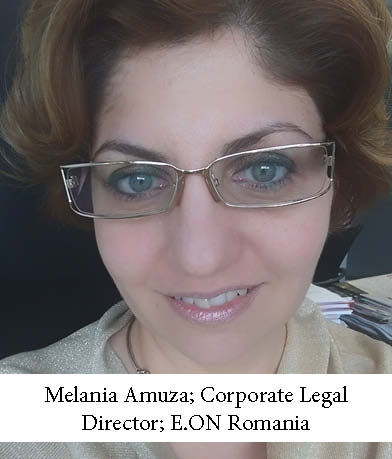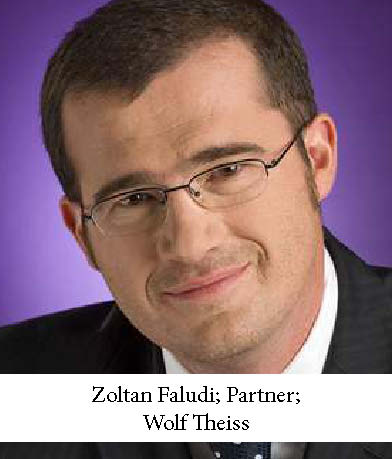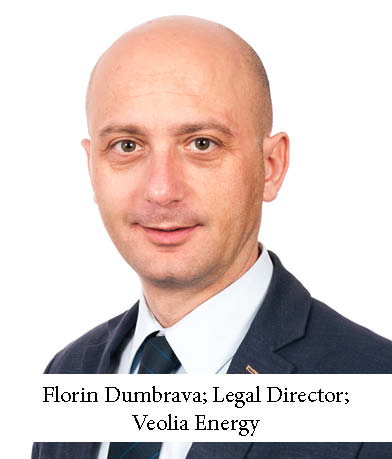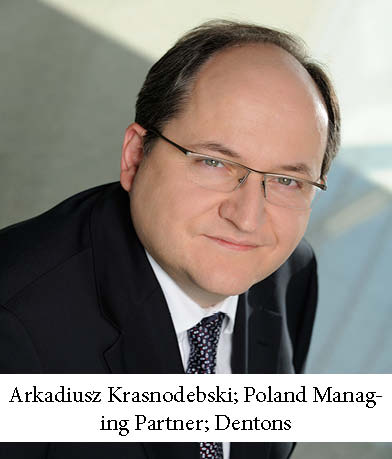Here’s a look at the state of CEE’s Energy markets formed from input from leading experts in the sector and our own coverage of the most significant happenings in the sector over the last year and a half.
Shrinking Prices and Demand
The overall decrease in pricing and a simultaneous decrease in demand for energy are exerting dramatic pressure on the energy industry right now, according to several of the people interviewed by CEELM recently. According to Paula Corban-Pelin, Counsel & Head of Energy at DLA Piper in Romania, “energy consumption is currently reducing dramatically,” both within her country and across the region. Florin Dumbrav a, Legal Director at Veolia Energy, explained that “in terms of the electricity market, there are a lot of new producers [in Romania], leading to strong competition within a market that has mostly unregulated costs.” In terms of thermal energy, “while the pricing is regulated by local authorities (with the write-off from regulatory bodies), operators are faced with ever-decreasing volumes in terms of consumption.” The result is problematic: “Producers wouldn’t mind the low costs if volumes would be high but, unfortunately, a lot of clients have disconnected themselves from the grid these days, and there are no protection systems in place.”
a, Legal Director at Veolia Energy, explained that “in terms of the electricity market, there are a lot of new producers [in Romania], leading to strong competition within a market that has mostly unregulated costs.” In terms of thermal energy, “while the pricing is regulated by local authorities (with the write-off from regulatory bodies), operators are faced with ever-decreasing volumes in terms of consumption.” The result is problematic: “Producers wouldn’t mind the low costs if volumes would be high but, unfortunately, a lot of clients have disconnected themselves from the grid these days, and there are no protection systems in place.”
Dumbrava pointed to two causes for the low volumes: “The large industry in Romania – the large production plants – are no longer operating, and the industry sector in general has been demanding less energy.” The latter, he explained, is also attributable to the fact that “large consumers have started implementing efficiency-focused mechanisms in terms of electricity use (such as switching to LED-based lighting solutions in the case of public spaces or industrial facilities, for example).”
This combination might also lie behind the observation by Willibald Plesser, Freshfields’ Co-Head of CEE/CIS, Country Partner for Turkey, and Head of the Energy Sector Group in Austria, that all companies “are fighting with cost-cutting and restructuring needs.” Plesser pointed to several players looking to “sort out their investments in countries such as Macedonia, Russia, Bulgaria, and others, with many already having sold their utilities businesses in Eastern Europe.” Plesser added: “I find that companies in the energy sector are retreating a bit from the region. Examples include E.ON from Bulgaria and Slovakia. Some are still in the region like EVN in Bulgaria, Macedonia, Croatia, or Statkraft of Norway in Albania. I also feel the market has become a bit more local, and examples are Czech EPH massively buying up assets in the region, or Energopro buying in Bulgaria.”
The Next Bet: Infrastructure and Hedging Risks
Dimitris Assimakis, Partner at Norton Rose Fulbright in Greece, also pointed to a drop in demand in the gas sector in Greece and said that the solution his country appears to be chasing involves “very ambitious plans revolv ing around a strategic goal for Greece to become a hub in the region.” This, he explained, would be supported by gas infrastructure projects currently being built or planned, such as the TransAdriatic pipeline.
ing around a strategic goal for Greece to become a hub in the region.” This, he explained, would be supported by gas infrastructure projects currently being built or planned, such as the TransAdriatic pipeline.
The strategic goal of building up infrastructure to become a hub in the region exists in Romania as well, according to Corban-Peli, who noted that “Romania is the biggest gas producer in South-Eastern Europe, while making good progress in discovering new offshore fields in the Black Sea.” Nonetheless, Corban-Peli said, “the country needs to invest in the gas infrastructure to make use of its geographical position and resources” – something that must materialize soon as a matter of “critical importance if Romania really wants to play its role in the region.”
The lawyers we spoke to identified two primary drivers of infrastructure developments and investments. The first was suggested by Plesser, who referred to recent reports that OMV’s offer to investors of a stake of up to 49% in Gas Connect Austria is being met with significant interest as illustrating the great interest investors – especially pension funds – are showing in long-term investments such as gas pipelines, which are considered fairly safe and stable investments with attractive profit margins. Corban-Pelin pointed to second driver: the list of 195 key energy infrastructure projects known as Projects of Common Interest (PCIs) drawn up by the European Commission to help create an integrated EU energy market. The European Commission’s website describes these PCIs as “essential for completing the European internal energy market and for reaching the EU’s energy policy objectives of affordable, secure, and sustainable energy.” According to the EC’s website, “PCIs may benefit from accelerated planning and permit granting, a single national authority for obtaining permits, improved regulatory conditions, lower administrative costs due to streamlined environmental assessment processes, increased public participation via consultations, incr eased visibility to investors, and access to financial support totaling EUR 5.35 billion from the Connecting Europe Facility (CEF) from 2014-2020.” (See Figure below “Projects of Common Interest”. Source: ec.europa.eu)

But not everyone is excited about the EC’s commitment to an integrated market. An Energy Partner at a major firm in Bratislava who preferred to remain anonymous explained that the European Commission’s efforts threaten “the crucial position of the country as a pipeline for the West from Russia.” In his country, he explained, the “development of an alternative stream doesn’t seem to be fair, and the benefits do not outweigh the potential loses incurred.”
As a result, energy compani es seem to be hedging their bets, where possible. Again referring to press reports, Plesser pointed to the OMV asset swap with Gazprom (presumably with the two looking to swap European fields with Russian fields). He explained that “this makes sense to me since it involves both a matter of risk sharing as well as getting away from the expensive production in Europe.” Plesser added that there has traditionally been a good relationship between OMV and Gazprom, dating back at least 30 years, tied in part to Austria’s strategic role as a gas hub (resulting in part from its excellent gas storage facilities and the existence of the Baumgarten hub). The other part Plesser notes his suspicion that “there are some political considerations [in Austria] at play … despite the general trend of sanctions applied by Europe to Russia, maintaining relatively constructive relationships with Russia.” He pointed to a recent visit of the Austrian President to Moscow as illustrative.
es seem to be hedging their bets, where possible. Again referring to press reports, Plesser pointed to the OMV asset swap with Gazprom (presumably with the two looking to swap European fields with Russian fields). He explained that “this makes sense to me since it involves both a matter of risk sharing as well as getting away from the expensive production in Europe.” Plesser added that there has traditionally been a good relationship between OMV and Gazprom, dating back at least 30 years, tied in part to Austria’s strategic role as a gas hub (resulting in part from its excellent gas storage facilities and the existence of the Baumgarten hub). The other part Plesser notes his suspicion that “there are some political considerations [in Austria] at play … despite the general trend of sanctions applied by Europe to Russia, maintaining relatively constructive relationships with Russia.” He pointed to a recent visit of the Austrian President to Moscow as illustrative.
Plans, Plans, Plans, and Headaches
As the Austrian/Russian relations referred to by Plesser demonstrate, the strategic and highly regulated energy sector often goes hand in hand with politics. As a result, many of the lawyers we spoke to suggested that they were awaiting considerable framework overhauls in their countries.
Assimakis reported that the main energy market in Greece is waiting for the Ministry of Energy to redesign the electricity market to conform with a target model, as, at the moment, there is a mandatory pool managed by the market operator that all users and suppliers have to go through in order to service customers. As a result, “practically, there are no bilateral agreements in place at the moment.” There is a deadline for the target model’s introduction, which, Assimakis explained, means that we’ll see a “complete overhaul of the power sector” – but not for some time, as he expects it to be at least 18 months before the new market model is fully adapted.
While Assimakis reported that that there are no real investments from the private sector on new thermal power plants (apart from the Public Power Corporation, PPC, which is planning a new lignite-fired power plant), he said that there are new players coming into the retail market, which is currently dominated by PPC. The prospect of increased competition is at least partially the result of Greece’s bailout plan, which mandates a series of reforms in the energy sector. One such reform – for which final agreement is still awaited – is the introduction of an auctioning system to provide other players in the power market with access to more economic production/generation sources such as lignite and hydro, to which only PPC has had access until now.
 Romania is seeing its fair share of extensive planning as well. Melania Simona Amuza, Corporate Director of Legal Department and Compliance at E.ON Romania, noted that apart from the “usual agenda,” there have been some updates on the legislative landscape that have kept her busy over the last two months relating to a “massive redrafting of the local energy law.” Amuza explained that she “ha[s] been busy revisiting many basic principles of the Energy Law (Law 123/2012),” and that she has “also been involved in a lot of discussions that basically had a business focus and which resulted in the new legal tax that was presented to the Romanian Parliament.”
Romania is seeing its fair share of extensive planning as well. Melania Simona Amuza, Corporate Director of Legal Department and Compliance at E.ON Romania, noted that apart from the “usual agenda,” there have been some updates on the legislative landscape that have kept her busy over the last two months relating to a “massive redrafting of the local energy law.” Amuza explained that she “ha[s] been busy revisiting many basic principles of the Energy Law (Law 123/2012),” and that she has “also been involved in a lot of discussions that basically had a business focus and which resulted in the new legal tax that was presented to the Romanian Parliament.”
Amuza explained that many of the proposed “legislative updates” involve revisiting some of the principles that “made sense during the period of liberalization of the industry,” but that now may no longer be “relevant or beneficial.”
Corban-Pelin at DLA also pointed to a wider series of discussions in the country related to Romania’s plans for the sector, saying: “There are a lot of talks about Romania lacking a solid strategy.” She mentioned a draft energy strategy that was published in late 2014 but never finalized and said that “recently, the new Government started discussions with stakeholders in the field to try to update the draft and figure out the areas in which to invest, which fields are of interest and which not, and so on.” She also added that some have questioned whether a formal strategy is even needed to begin with. To back up her personal belief that it is, Corban-Pelin pointed to the plan by the Cernavoda nuclear power plant to add two new reactors, which was made more difficult by the decision of the initial private investors to back out of the project. Recently, she reported, a memorandum was concluded with a Chinese company, and there are now advanced-stage negotiations to finalize the project with them as a sole investor. “There are huge investments to be carried out, and there are a lot of voices claiming that there was no real study to actually figure out if we really need the new nuclear reactors, given that energy consumption is currently reducing dramatically,” Corban-Pelin claimed, explaining that the existence of a clearer strategy for the overall energy sector would have addressed such concerns.
pointed to the plan by the Cernavoda nuclear power plant to add two new reactors, which was made more difficult by the decision of the initial private investors to back out of the project. Recently, she reported, a memorandum was concluded with a Chinese company, and there are now advanced-stage negotiations to finalize the project with them as a sole investor. “There are huge investments to be carried out, and there are a lot of voices claiming that there was no real study to actually figure out if we really need the new nuclear reactors, given that energy consumption is currently reducing dramatically,” Corban-Pelin claimed, explaining that the existence of a clearer strategy for the overall energy sector would have addressed such concerns.
Indeed, this is only one example of a state that seems to be moving sluggishly in defining its goals. Dragoljub Cibulic, Partner at BDK Attorneys at Law, reported that Serbia is also lagging behind on its restructuring of the gas sector.
He explained that Serbia has one state-owned gas utility company, which was not restructured despite being required to do so five or six years ago. “We only started the process,” he said, “and once we did, the energy community was really appreciative of our efforts initially, but a few years down the line, no real progress was made.” He referred to the chance that this failure to complete the restructuring will lead to some form of punitive sanctions in the near future.
But even when the ap propriate schemes are in place, energy companies still face challenges. Florin Dumbrava, Legal Director at Veolia Energy in Romania, noted that Veolia Energy’s activity in thermal energy production is thoroughly defined and regulated by the ANRE (the Romanian Regulatory Authority for Energy). Dumbrava reports that his company is required to communicate its energy production numbers to ANRE, after which the regulatory body verifies whether or not the company was overcompensated for the previous year – a process he called “the overcompensation methodology.” This process, as Dumbrava described it, represents “a considerable headache” for high-efficiency cogeneration suppliers, in particular private ones, with the companies constantly being “contested as overcompensated.” He believes that “the methodology is flawed, since it does not take into account all the costs that operators are facing, especially for those that hold their plants in concession because they do not count these assets into the asset base.” By contrast, “in the case of state operators, they do count them in, and we are constantly trying to build up arguments against this form of discrimination.”
propriate schemes are in place, energy companies still face challenges. Florin Dumbrava, Legal Director at Veolia Energy in Romania, noted that Veolia Energy’s activity in thermal energy production is thoroughly defined and regulated by the ANRE (the Romanian Regulatory Authority for Energy). Dumbrava reports that his company is required to communicate its energy production numbers to ANRE, after which the regulatory body verifies whether or not the company was overcompensated for the previous year – a process he called “the overcompensation methodology.” This process, as Dumbrava described it, represents “a considerable headache” for high-efficiency cogeneration suppliers, in particular private ones, with the companies constantly being “contested as overcompensated.” He believes that “the methodology is flawed, since it does not take into account all the costs that operators are facing, especially for those that hold their plants in concession because they do not count these assets into the asset base.” By contrast, “in the case of state operators, they do count them in, and we are constantly trying to build up arguments against this form of discrimination.”
Elections
 Elections, both those that have recently concluded and those upcoming, play a big role in the energy sector. In the “A Look at Renewables” section, Arkadiusz Krasnodebski, Dentons’ Poland Managing Partner and the firm’s Head of Energy practice in Poland and Europe, explained how a change of Government following general
Elections, both those that have recently concluded and those upcoming, play a big role in the energy sector. In the “A Look at Renewables” section, Arkadiusz Krasnodebski, Dentons’ Poland Managing Partner and the firm’s Head of Energy practice in Poland and Europe, explained how a change of Government following general
elections first put plans related to the renewables sector on hold, and later seem to have changed them considerably. Pending elections add to the slowdown of framework implementations as well, Cibulic explained, pointing out that the highly anticipated restructuring in Serbia he mentioned earlier will likely have to wait: “Since we’re looking at elections soon, the Government is unlikely to do it before the elections, especially since the new legislation will likely translate into an increase on the end consumer bill, which is not always welcomed during an election year.”
And even when elections are not coming anytime soon, voters’ views are still influential. Dumbrava described the pricing challenges energy companies in Romania face, making it particularly difficult to cover production costs: “For us as suppliers of thermal energy produced in cogeneration, this is made even more difficult by the fact that prices of heat are approved at the level of local authorities, which does lead to some electoral considerations.” As a result, he added: “We find it hard to explain at times that the costs of production have gone up and that we need to adapt prices to the actual cost.”
State Control
The impact of state policy on the sector goes beyond considerations of
pricing or incentives. In Hungary, participants to the recent CEE Legal Matters Round Table (see page 62), discussed the increasingly active Hungarian Government and its “soft nationalizations” approach in the sector. Krasnodebski spoke about re-consolidation in Poland as well, noting that players such as EDF and Engie are already opting to leave the market and describing it as “an ongoing process whereby we may see, a couple of years down the line, a market split among four consolidated groups – all controlled to some extent by the state.” Signs of this are already appearing, he reported, and if they continue in this direction, “it will represent a considerable shift in the market, with these tending to focus on pursuing conventional projects rather than developing a lot of renewables ones.” Krasnodebski added: “If that does pan out, it is only a
matter of time before someone will ask, why do we need four groups and not just have two … and later, down the line, why even need two?”
Krasnodebski agreed that the situation in Poland is, in some ways, comparable to Hungary, “but there it was a matter of the state allowing for big privatizations and, after they were completed, [finding] that there was (a) a risk element and (b) … an expectation to be able to increase tariffs (resulting from CAPEX and other needs), whereas the Government wanted to limit price increases.” In Poland, by contrast, “except for Warsaw, where you have RWE, much of it continued to be controlled by the State Treasury, which meant that prices going up in an uncontrolled manner is a small risk. There are, however a different set of problems at play since the generation is still predominantly based on coal, which means that the cost of CO2 emissions will be going up, creating a bit of a pricing pressure.”
We thank the following for sharing their opinions and analysis for this report:
- Willibald Plesser; Co-Head of the CEE/CIS; Freshfields
- Arkadiusz Krasnodebski; Poland Managing Partner; Dentons,
- Dimitris Assimakis; Partner; Norton Rose Fulbright
- Paula Corban-Pelin; Counsel & Head of Energy; DLA Piper
- Florin Dumbrava; Legal Director; Veolia Energy
- Melania Amuza; Corporate Legal Director; E.ON Romania
- Zoltan Faludi; Partner; Wolf Theiss
This article was originally published in Issue 3.2 of the CEE Legal Matters Magazine. If you would like to receive a hard copy of the magazine, you can subscribe here.




 ing around a strategic goal for Greece to become a hub in the region.” This, he explained, would be supported by gas infrastructure projects currently being built or planned, such as the TransAdriatic pipeline.
ing around a strategic goal for Greece to become a hub in the region.” This, he explained, would be supported by gas infrastructure projects currently being built or planned, such as the TransAdriatic pipeline. 
 es seem to be hedging their bets, where possible. Again referring to press reports, Plesser pointed to the OMV asset swap with Gazprom (presumably with the two looking to swap European fields with Russian fields). He explained that “this makes sense to me since it involves both a matter of risk sharing as well as getting away from the expensive production in Europe.” Plesser added that there has traditionally been a good relationship between OMV and Gazprom, dating back at least 30 years, tied in part to Austria’s strategic role as a gas hub (resulting in part from its excellent gas storage facilities and the existence of the Baumgarten hub). The other part Plesser notes his suspicion that “there are some political considerations [in Austria] at play … despite the general trend of sanctions applied by Europe to Russia, maintaining relatively constructive relationships with Russia.” He pointed to a recent visit of the Austrian President to Moscow as illustrative.
es seem to be hedging their bets, where possible. Again referring to press reports, Plesser pointed to the OMV asset swap with Gazprom (presumably with the two looking to swap European fields with Russian fields). He explained that “this makes sense to me since it involves both a matter of risk sharing as well as getting away from the expensive production in Europe.” Plesser added that there has traditionally been a good relationship between OMV and Gazprom, dating back at least 30 years, tied in part to Austria’s strategic role as a gas hub (resulting in part from its excellent gas storage facilities and the existence of the Baumgarten hub). The other part Plesser notes his suspicion that “there are some political considerations [in Austria] at play … despite the general trend of sanctions applied by Europe to Russia, maintaining relatively constructive relationships with Russia.” He pointed to a recent visit of the Austrian President to Moscow as illustrative. Romania is seeing its fair share of extensive planning as well. Melania Simona Amuza, Corporate Director of Legal Department and Compliance at E.ON Romania, noted that apart from the “usual agenda,” there have been some updates on the legislative landscape that have kept her busy over the last two months relating to a “massive redrafting of the local energy law.” Amuza explained that she “ha[s] been busy revisiting many basic principles of the Energy Law (Law 123/2012),” and that she has “also been involved in a lot of discussions that basically had a business focus and which resulted in the new legal tax that was presented to the Romanian Parliament.”
Romania is seeing its fair share of extensive planning as well. Melania Simona Amuza, Corporate Director of Legal Department and Compliance at E.ON Romania, noted that apart from the “usual agenda,” there have been some updates on the legislative landscape that have kept her busy over the last two months relating to a “massive redrafting of the local energy law.” Amuza explained that she “ha[s] been busy revisiting many basic principles of the Energy Law (Law 123/2012),” and that she has “also been involved in a lot of discussions that basically had a business focus and which resulted in the new legal tax that was presented to the Romanian Parliament.”  pointed to the plan by the Cernavoda nuclear power plant to add two new reactors, which was made more difficult by the decision of the initial private investors to back out of the project. Recently, she reported, a memorandum was concluded with a Chinese company, and there are now advanced-stage negotiations to finalize the project with them as a sole investor. “There are huge investments to be carried out, and there are a lot of voices claiming that there was no real study to actually figure out if we really need the new nuclear reactors, given that energy consumption is currently reducing dramatically,” Corban-Pelin claimed, explaining that the existence of a clearer strategy for the overall energy sector would have addressed such concerns.
pointed to the plan by the Cernavoda nuclear power plant to add two new reactors, which was made more difficult by the decision of the initial private investors to back out of the project. Recently, she reported, a memorandum was concluded with a Chinese company, and there are now advanced-stage negotiations to finalize the project with them as a sole investor. “There are huge investments to be carried out, and there are a lot of voices claiming that there was no real study to actually figure out if we really need the new nuclear reactors, given that energy consumption is currently reducing dramatically,” Corban-Pelin claimed, explaining that the existence of a clearer strategy for the overall energy sector would have addressed such concerns. propriate schemes are in place, energy companies still face challenges. Florin Dumbrava, Legal Director at Veolia Energy in Romania, noted that Veolia Energy’s activity in thermal energy production is thoroughly defined and regulated by the ANRE (the Romanian Regulatory Authority for Energy). Dumbrava reports that his company is required to communicate its energy production numbers to ANRE, after which the regulatory body verifies whether or not the company was overcompensated for the previous year – a process he called “the overcompensation methodology.” This process, as Dumbrava described it, represents “a considerable headache” for high-efficiency cogeneration suppliers, in particular private ones, with the companies constantly being “contested as overcompensated.” He believes that “the methodology is flawed, since it does not take into account all the costs that operators are facing, especially for those that hold their plants in concession because they do not count these assets into the asset base.” By contrast, “in the case of state operators, they do count them in, and we are constantly trying to build up arguments against this form of discrimination.”
propriate schemes are in place, energy companies still face challenges. Florin Dumbrava, Legal Director at Veolia Energy in Romania, noted that Veolia Energy’s activity in thermal energy production is thoroughly defined and regulated by the ANRE (the Romanian Regulatory Authority for Energy). Dumbrava reports that his company is required to communicate its energy production numbers to ANRE, after which the regulatory body verifies whether or not the company was overcompensated for the previous year – a process he called “the overcompensation methodology.” This process, as Dumbrava described it, represents “a considerable headache” for high-efficiency cogeneration suppliers, in particular private ones, with the companies constantly being “contested as overcompensated.” He believes that “the methodology is flawed, since it does not take into account all the costs that operators are facing, especially for those that hold their plants in concession because they do not count these assets into the asset base.” By contrast, “in the case of state operators, they do count them in, and we are constantly trying to build up arguments against this form of discrimination.” Elections, both those that have recently concluded and those upcoming, play a big role in the energy sector. In the “A Look at Renewables” section, Arkadiusz Krasnodebski, Dentons’ Poland Managing Partner and the firm’s Head of Energy practice in Poland and Europe, explained how a change of Government following general
Elections, both those that have recently concluded and those upcoming, play a big role in the energy sector. In the “A Look at Renewables” section, Arkadiusz Krasnodebski, Dentons’ Poland Managing Partner and the firm’s Head of Energy practice in Poland and Europe, explained how a change of Government following general